Making an icon: Cordelia de Castellane and Noé Duchaufour-Lawrance unite
Made of glass, a new creation illuminates a glamorous chapter of Dior’s biography
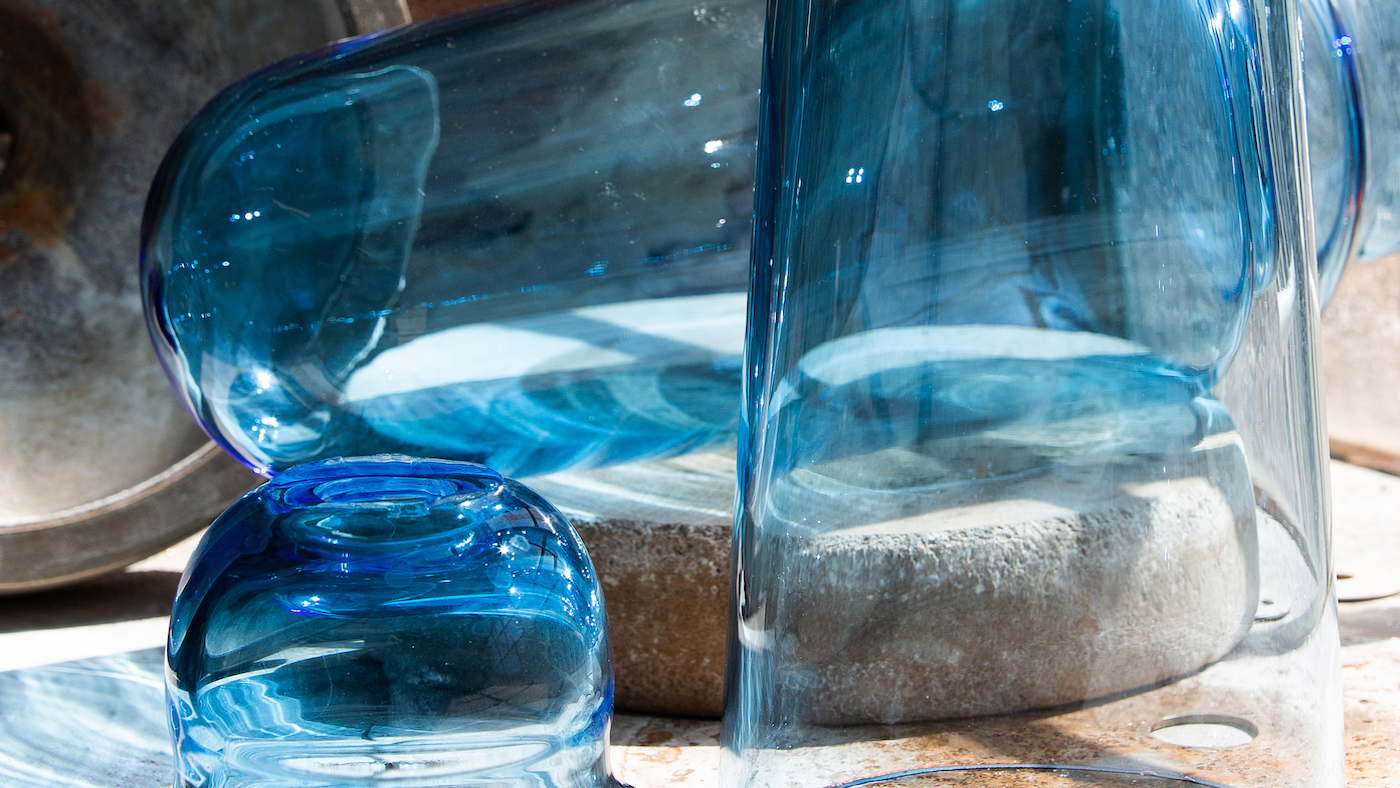
“I maintain a very strong relationship with the sea,” says Noé Duchaufour-Lawrance. The award-winning French designer finds the root for his affinity with the big blue to lie in his childhood. The son of two artists, Duchaufour-Lawrance was raised in rural Brittany, in north-western France. And while he eventually left Brittany – to study sculpture at the École des Arts Appliqués, followed by training in furniture design at the École des Arts Décoratifs – and has since called Paris and Lisbon, Portugal home, Duchaufour-Lawrance in spirit still draws from memories of open waters, made many years ago. “I feel a need to be near it,” he muses. “It provides me with inspiration, strength and energy.”
Nature in general, and the colours, shapes and surfaces nature encompasses, have long guided Duchaufour-Lawrance’s work, which he completes for a list of high-profile collaborators and makers that among others have counted furniture company Ligne Roset, champagne producer Perrier-Jouët and Air France. For the latter, Duchaufour-Lawrance in 2012 dreamt up a passenger lounge at Paris’ Charles de Gaulle airport: inspired by forests, the designer dotted the space with tree and leaf-like motifs, all realised in serene colours. That same year, he debuted Ammonite, his bookcase forged from steel, its inspiration the curling, circular formations of millennia-old ammonoid fossils. “Without imitating nature, I take inspiration from it,” he describes of his practice. “Its universality, its mysteries, and the fascination that it elicits.”
And once an inspiration has struck, Duchaufour-Lawrance sets about fine-tuning his ideas by – in lieu of putting pen to paper – working directly with his materials, much like a sculptor would. It’s something he today calls his “manual method”.
The Week
Escape your echo chamber. Get the facts behind the news, plus analysis from multiple perspectives.

Sign up for The Week's Free Newsletters
From our morning news briefing to a weekly Good News Newsletter, get the best of The Week delivered directly to your inbox.
From our morning news briefing to a weekly Good News Newsletter, get the best of The Week delivered directly to your inbox.
As a way of working, it has its founding in his education. “My training in sculpture provided me with a taste for contact with material and its textures, and a perpetual questioning of the way to build and make something,” he says. This extends to all stages of realising a project, from initial sampling to expert manufacture. “I like to go into the workshops and speak with the craftsmen,” Duchaufour-Lawrance enthuses. “I don’t hold back when it comes to crafting techniques: I ask questions to get right to the heart of the matter. Through this direct connection, we work together in a way to blur the lines between design and execution.”
Duchaufour-Lawrance delights in the gradual realisation of his designs, in the process of making things just so. In addition to steel, he has worked with materials including solid American walnut wood, waxed concrete, pale marble and brushed brass. He recently unveiled seven pieces of modular furniture – a table, matching chairs – in burnt, golden-hued cork.
And he innovates with heritage techniques, too: in the autumn of last year, Duchaufour-Lawrance introduced Barro negro, a line of jet black ceramics nodding to an ancient, open-air technique of firing clay. On his Instagram profile, snapshots taken in Portugal – Duchaufour-Lawrance had partnered with local expert makers – show the designer sat close to an ad hoc firing pit, facing billowing clouds of smoke and bright orange flames. “My creative process often takes form through handiwork,” he says.
Recently, Duchaufour-Lawrance partnered with master glassmakers at work in Meisenthal. A village in the Moselle department of north-eastern France, it is in Meisenthal that crafting with glass has history.
A free daily email with the biggest news stories of the day – and the best features from TheWeek.com
La Verrerie de Meisenthal, the local glasswork was first established in 1704; from 1867 onwards, the site began mastering the swirling, naturalistic patterns and organic shapes of the Art Nouveau, working with the movement’s leading glass artist Émile Gallé. Insisting on time-honoured techniques, in the 20th century La Verrerie eventually ran into difficulties post-war. Through a government initiative, it was given a new lease of life in 1992 and today operates as the Centre International d’Art Verrier, as one of the oldest glass workshops in France.
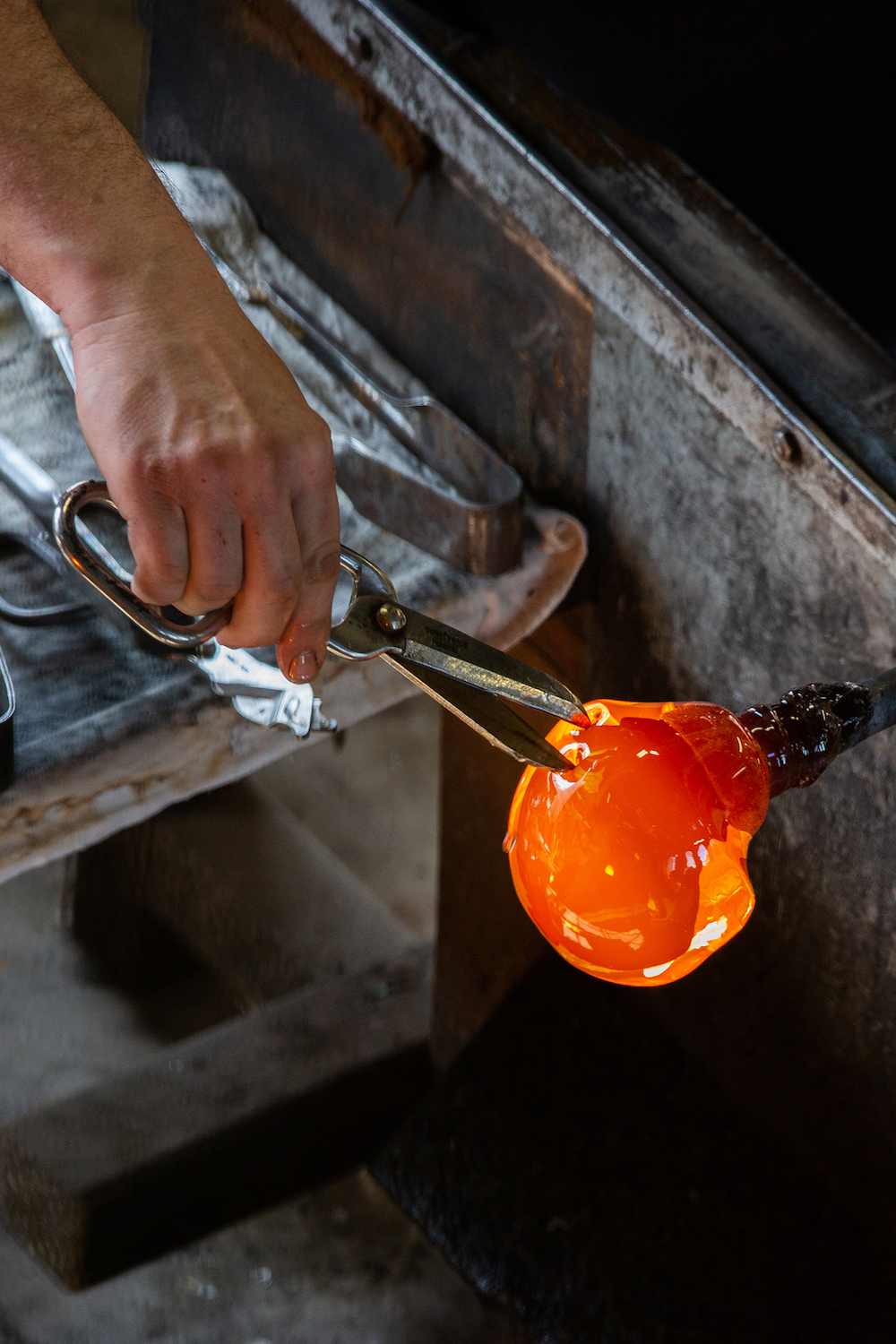
Working with a team of Meisenthal glassblowers, Duchaufour-Lawrance refined his ideas for a portable, cordless lamp, a design he had come up with for Dior and the Parisian luxury brand’s homeware division. “The lamp [he] designed for Dior Maison brings to mind the shape of Christian Dior’s Corolla skirts,” says Cordelia de Castellane, naming the founding couturier’s emblematic A-line skirts, a richly sweeping silhouette that made newspaper headlines when unveiled as part of Dior’s 1947 New Look collection. Named after a flower’s corolla – the sum of all its petals – the design paid homage to Monsieur Dior’s passion for horticulture and has since become a house code, of which de Castellane is an expert reader.
De Castellane first joined the brand in 2012 – having honed her skills in the ateliers of Chanel, where her uncle Giles Dufour assisted the late Karl Lagerfeld, Emanuel Ungaro and Giambatista Valli. Since early 2017, de Castellane has been in charge of Dior Maison. In her role, she artfully excerpts details from the brand’s biography, which then finesse her collections of plates, glassware or cutlery. In the past, she has authored tableware capturing the delicate beauty of white-flowering lily of the valley (a plant that was treasured by Christian Dior); her Granville collection is christened after the couturier's childhood home in Normandy, where his mother nurtured acres of verdant gardens.
For her latest offering, de Castellane researched Germaine “Mizza” Bricard. Also known as “Mitzah”, Bricard counted among Christian Dior’s chief muses. In Paris, at the couturier’s townhouse ateliers in 30, avenue Montaigne Bricard made up one third of Dior’s trio of trusted women which also counted Raymonde Zehnacker – director of the design studio – and technical director Marguerite Carré.
Bricard’s official title was head of the millinery department – today in London, a 1960 quail-feather and organza toque held in the collections of the Victoria & Albert museum is attributed to Bricard – and it was her flair that enthralled Christian Dior. “Madame Bricard is one of those people, increasingly rare, who make elegance their sole raison d’être,” the couturier wrote in his memoirs.
In addition to pearls, Bricard had a thing for leopard print. Her penchant has been well-documented: sitting for American photographer Louise Dahl-Wolfe in 1940, Bricard donned a leopard-spotted ensemble; in 1960, she repeated her approach for Cecil Beaton, stepping in front of Beaton’s lens sporting a dotted hat and matching shawl.
The animal’s distinctive piebald, and Bricard’s love for it, also inspired Dior, who in 1947 came up with day- and evening dresses cut from leopard printed fabrics. It proved a pioneering move. “The Blue Mizza collection is an ode to the Mizza print that Monsieur Dior created for his 1947 collection. He designed it for his muse,” de Castellane explains. “I wanted to make indigo and blue variations on it.”
Released this year, with her Blue Mizza collection de Castellane cast Bricard’s best-loved wild cat theme in ultramarine. There are vibrantly-printed round dessert plates, matched with octagonal dinner and bread porcelain plates that are made in France and are bordered with an indigo bamboo motif. Linen placemats and corresponding napkins come piebald-printed and embroidered; the selection also includes a square Plexiglas tray and a round glass centrepiece created in Murano, Italy.
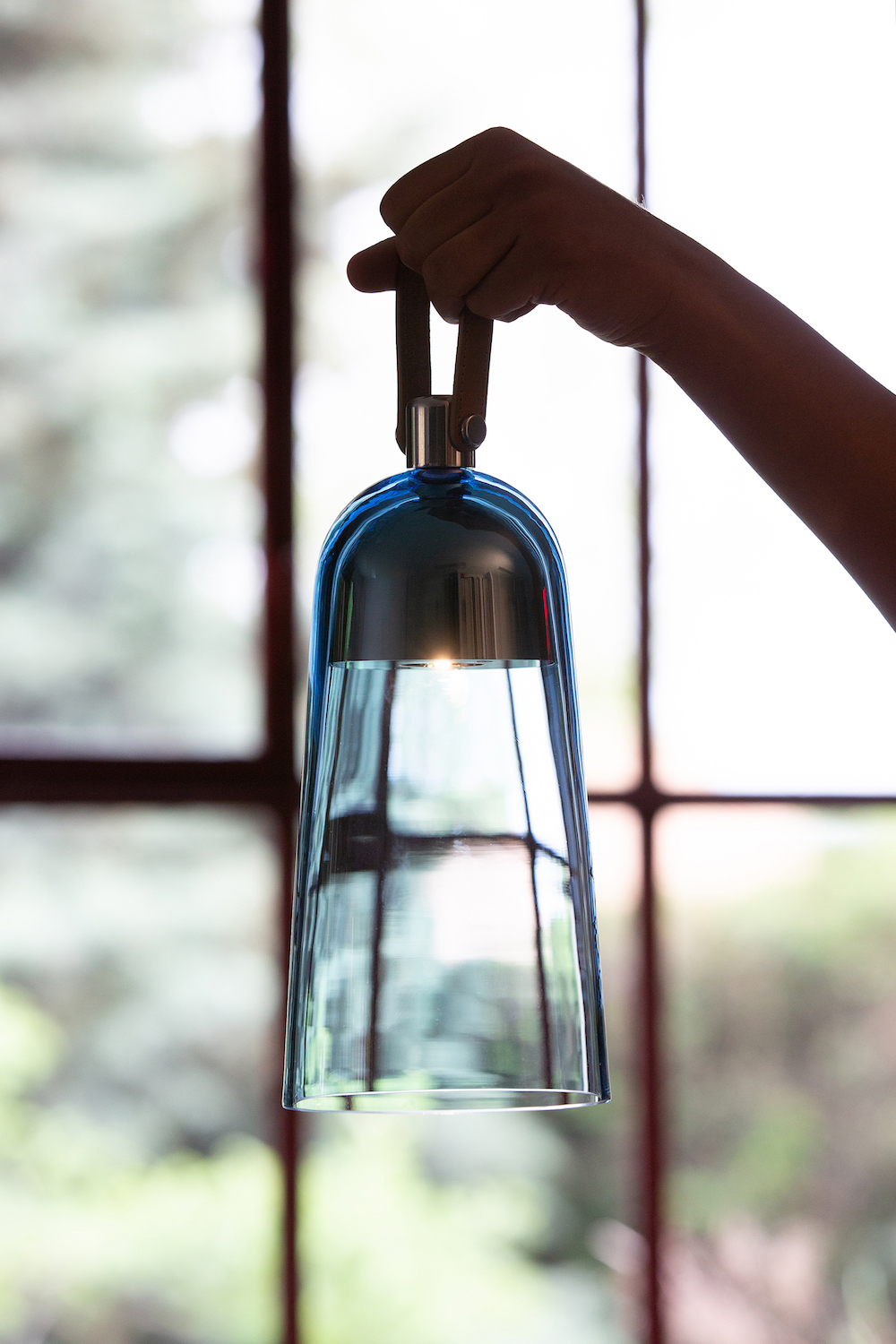
De Castellane attributes a “poetic yet very couture refinement” to Duchaufour-Lawrance’s portable lamp. The designer in turn echoes de Castellane’s sentiment, explaining his initial inspiration to have stemmed from Dior’s dressmaking heritage. “I decided to pay tribute to the modernity of one of the very first collections of Christian Dior, who focused on fluid, sculptural shapes,” he says. “I emphasised this dichotomy by playing on the quality of the materials: the transparent glass filters enhance the light, while the opaque bell-shaped dome conceals the light source.”
And de Castellane’s blue palette found a natural match in Duchaufour-Lawrance’s childhood souvenirs of open waters. The designer says: “I selected the aquamarine blue in recognition of this very noble element which, by its very essence, is never fixed, and which brings shape to everything.”
Mouth-blown and finished by hand, each Corolle portable lamp requires a sequence of production steps. All require skill and an understanding of glass, a material that demands precision, speed and the utmost care. In Meisenthal, glass is made malleable by being heated to more than 1,000C.
First up is a piece of coloured glass, which a glass blower adds to his blow pipe, to warm up. To this, clear liquid glass is added; a process that, in between heating, is repeated until enough material is gathered. The glass blower will then manipulate the glass to form the lamp's bell-like shape. Cutting, smoothing of edges and drilling follows overnight cooling. Lamps are marked complete once fitted with a leather handle. Duchaufour-Lawrance says: “This elegant lamp is as precious as a piece of jewellery.”
All images by Sophie Carre.
-
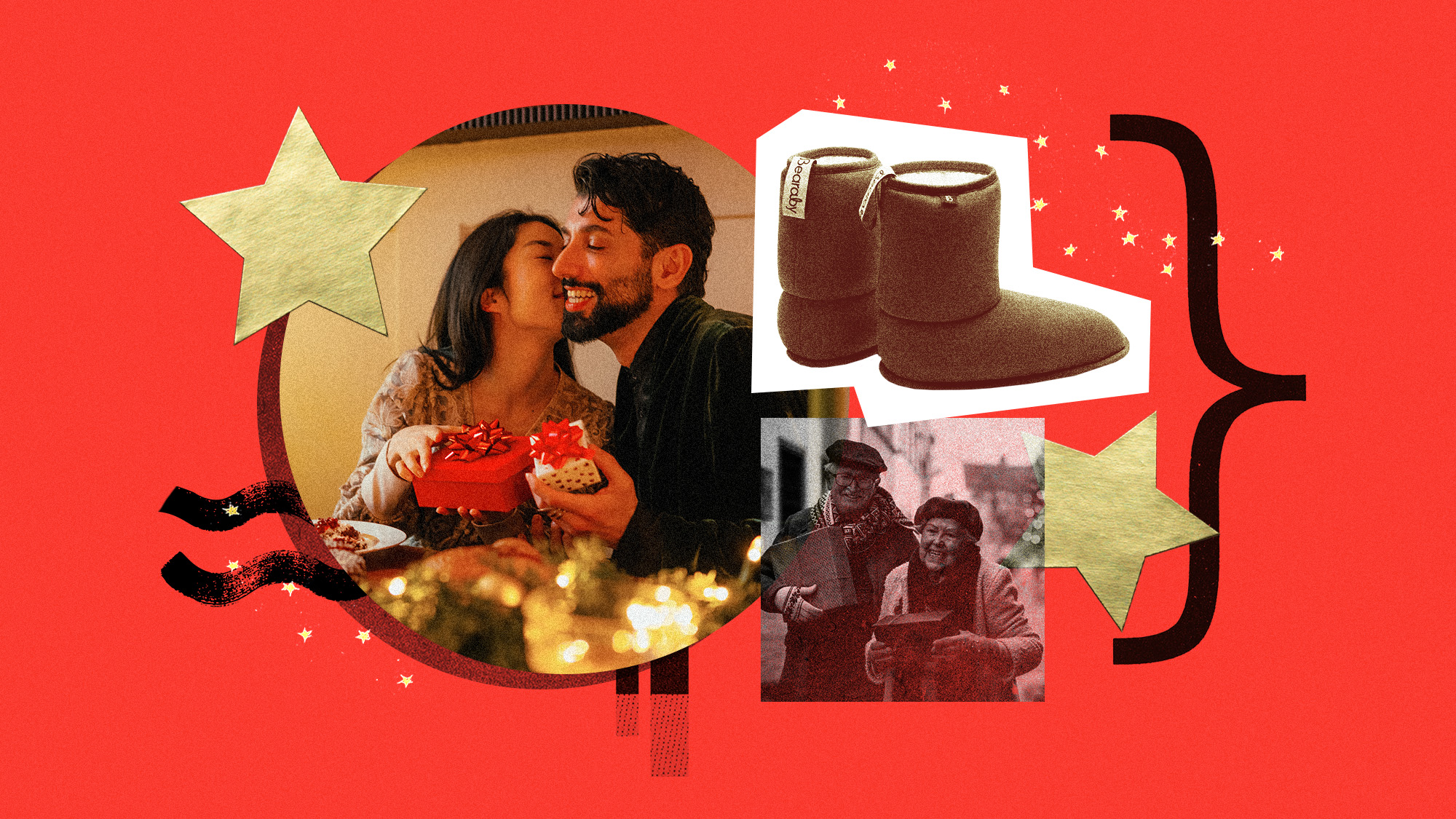 11 extra-special holiday gifts for everyone on your list
11 extra-special holiday gifts for everyone on your listThe Week Recommends Jingle their bells with the right present
-
 ‘Furious Minds: The Making of the MAGA New Right’ by Laura K. Field and ‘The Dream Factory: London’s First Playhouse and the Making of William Shakespeare’ by Daniel Swift
‘Furious Minds: The Making of the MAGA New Right’ by Laura K. Field and ‘The Dream Factory: London’s First Playhouse and the Making of William Shakespeare’ by Daniel SwiftFeature An insider’s POV on the GOP and the untold story of Shakespeare’s first theater
-
 How to shop smarter with a grocery budget
How to shop smarter with a grocery budgetThe Explainer No more pushing your cart down the aisles on autopilot
-
 Inside the rocky marriage of Priscilla Presley and Elvis
Inside the rocky marriage of Priscilla Presley and ElvisUnder the Radar Rock and roll legend’s former wife praises Sofia Coppola’s new biopic
-
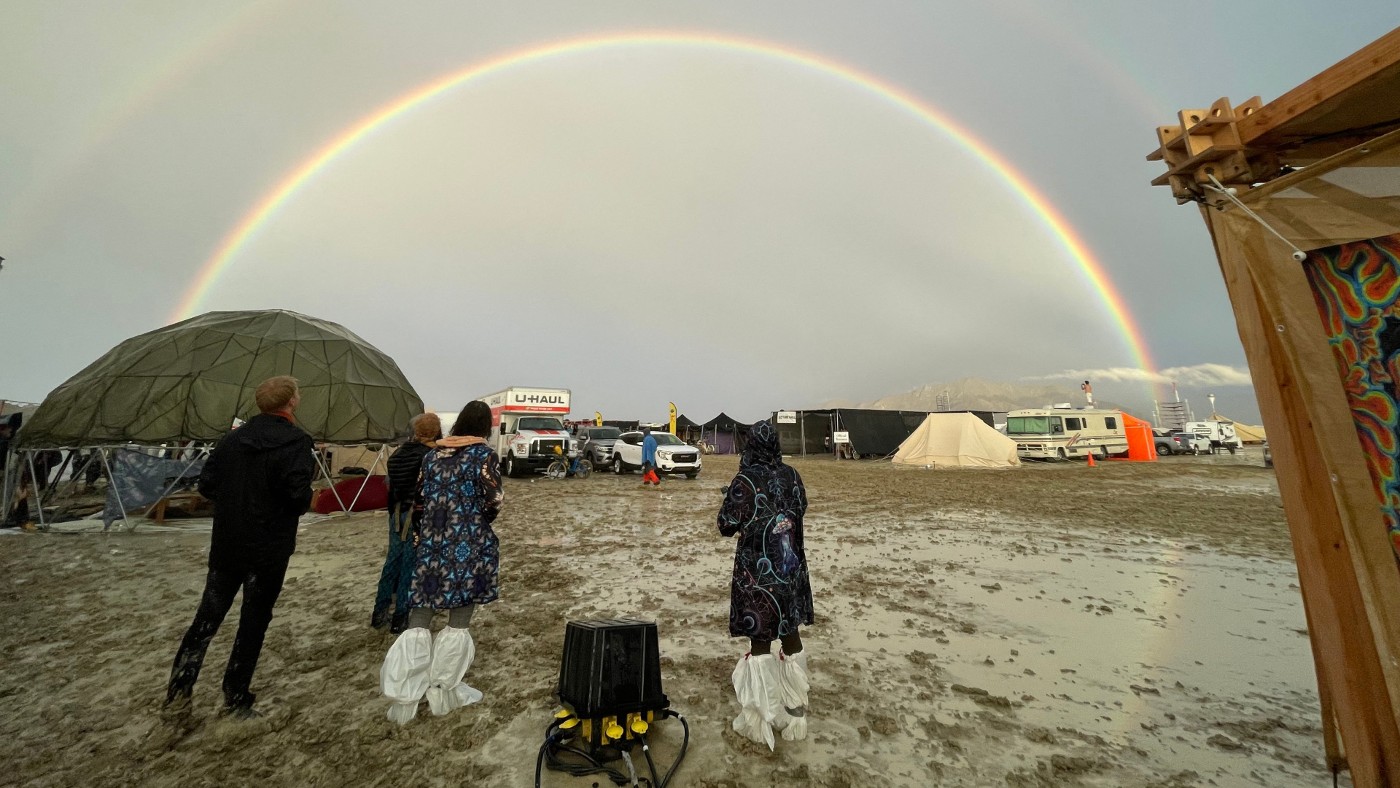 How Burning Man descended into chaos
How Burning Man descended into chaosUnder the Radar Torrential rain leaves thousands of revellers stuck at Nevada festival
-
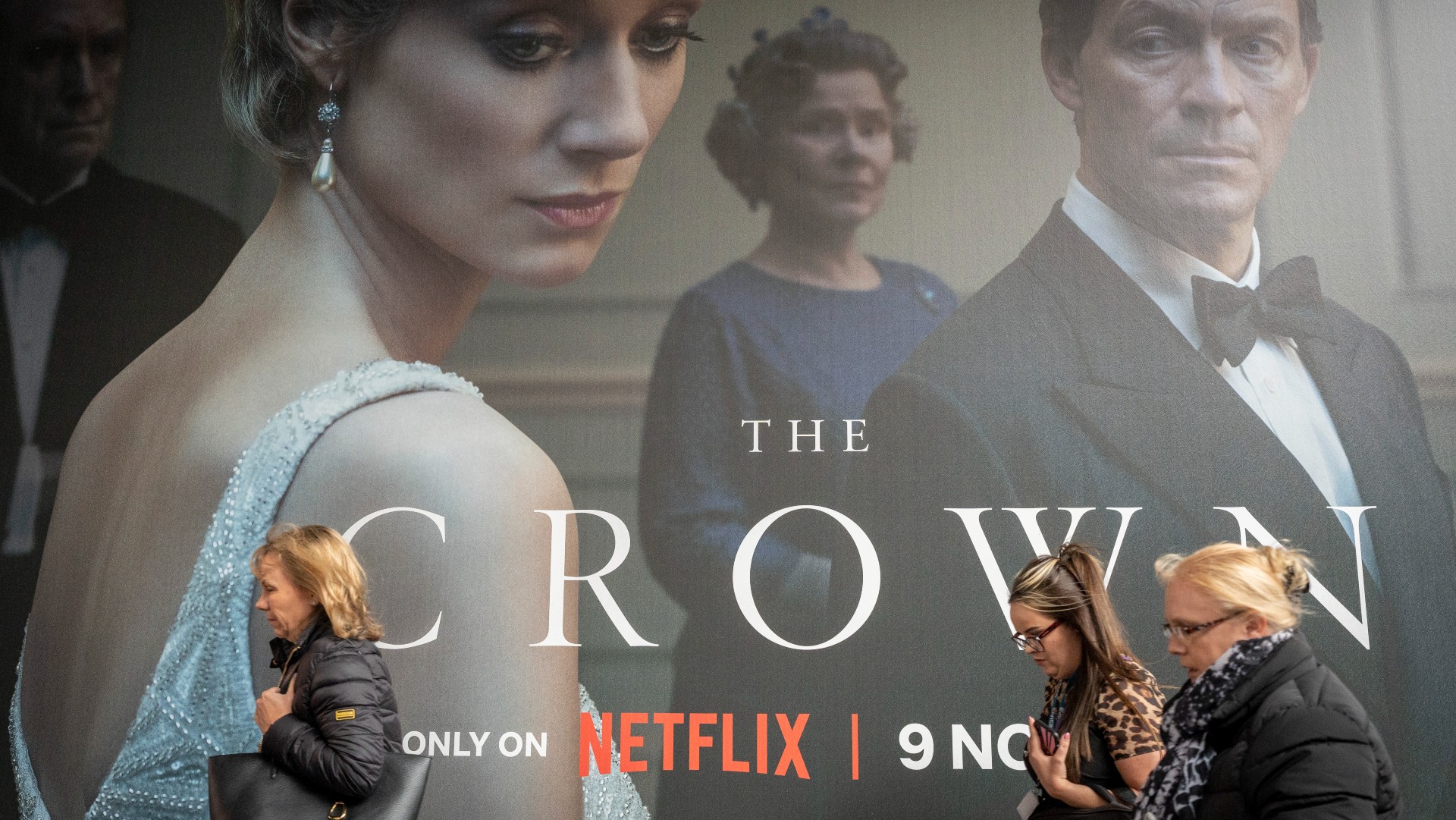 Princess Diana’s death in The Crown: how accurate is the Netflix series?
Princess Diana’s death in The Crown: how accurate is the Netflix series?Under the Radar The controversial show is returning for sixth and final season later this year
-
 Michael Parkinson: five best interviews by star presenter
Michael Parkinson: five best interviews by star presenterUnder the Radar ‘King of the chat show’ Parky has died aged 88
-
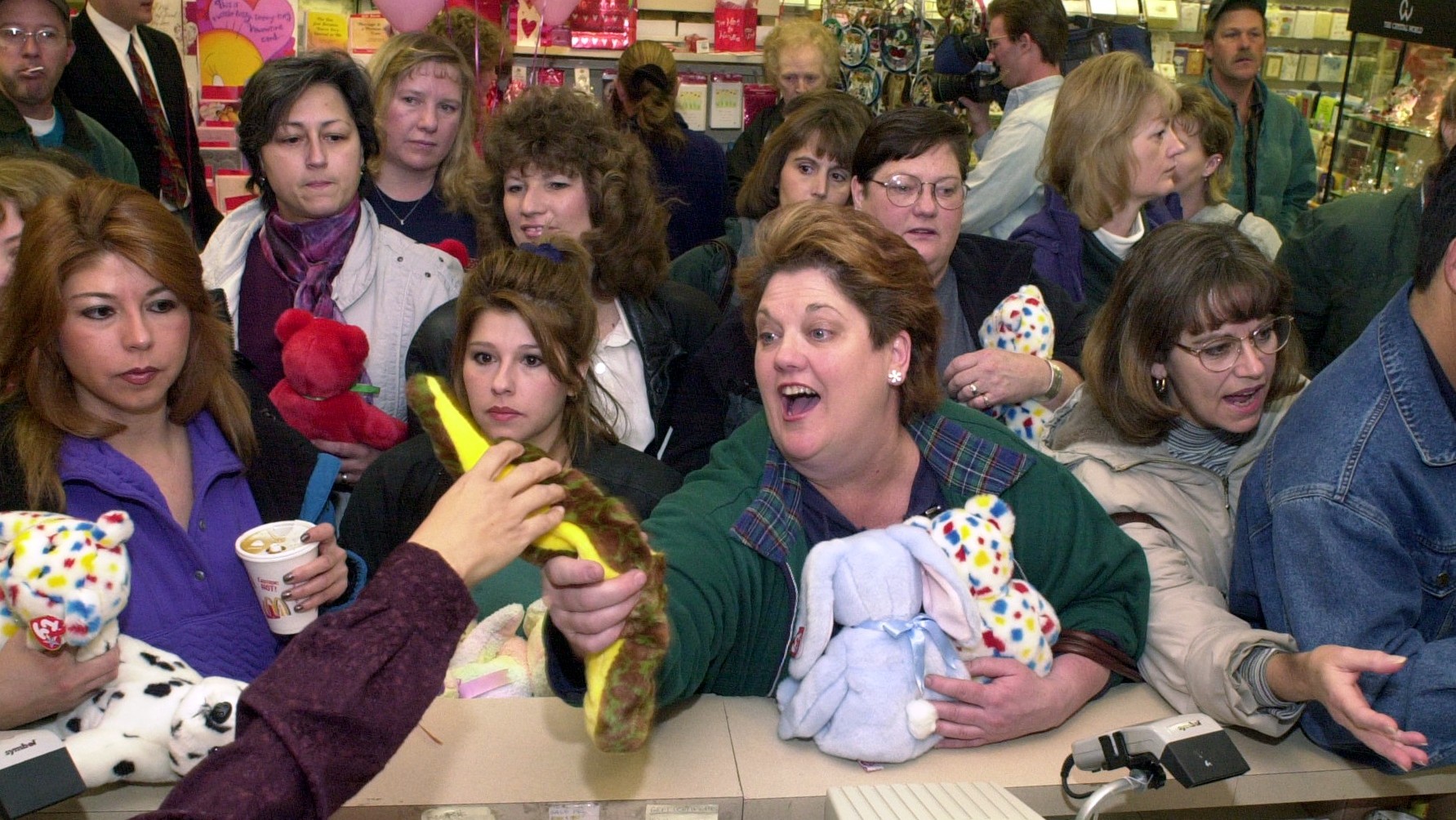 The Beanie Bubble: the true story behind fallen toy empire film
The Beanie Bubble: the true story behind fallen toy empire filmUnder the Radar New release depicts rise and fall of 1990s stuffed plushy phenomenon
-
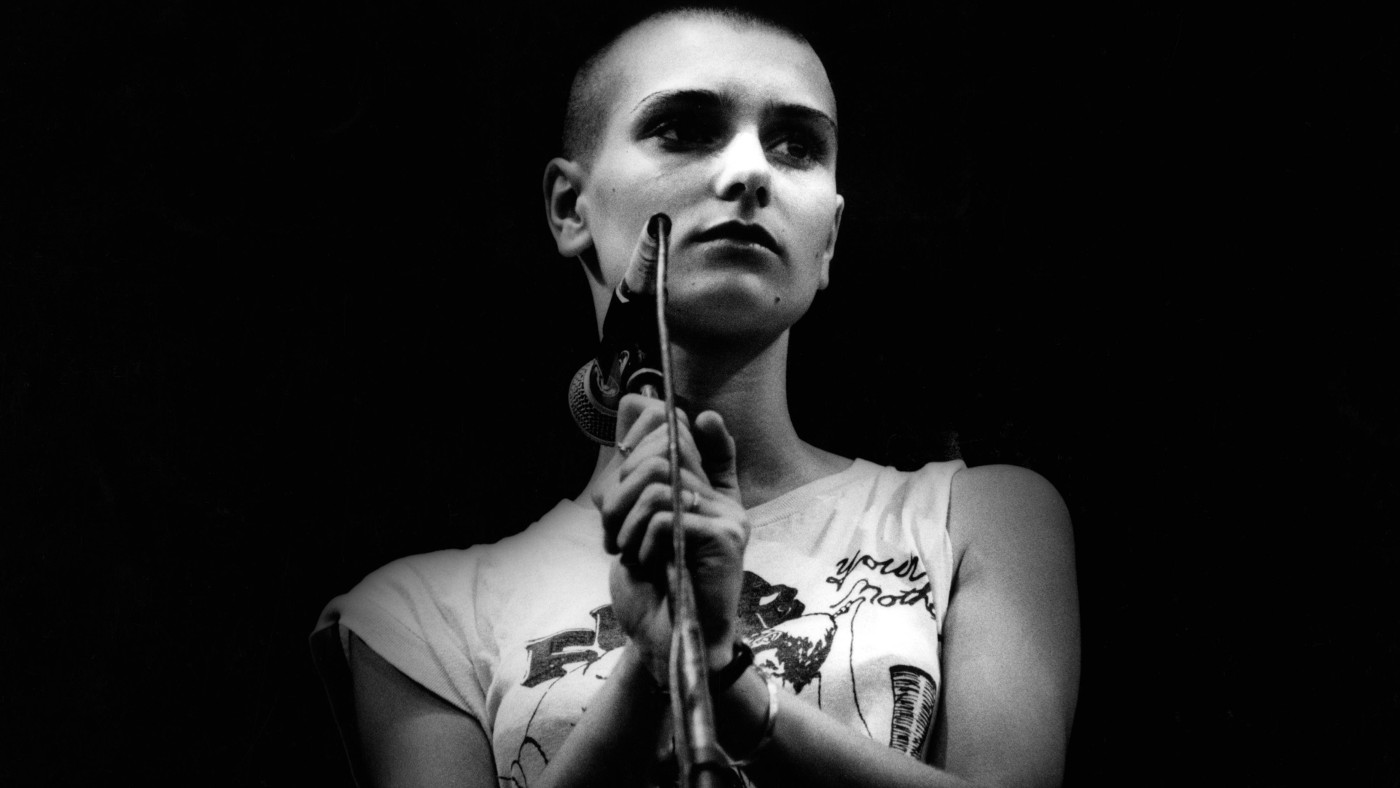 The story behind Sinéad O’Connor’s iconic Saturday Night Live performance
The story behind Sinéad O’Connor’s iconic Saturday Night Live performanceUnder the Radar Singer ‘stepped into culture-war infamy’ after tearing photograph of the Pope live on air
-
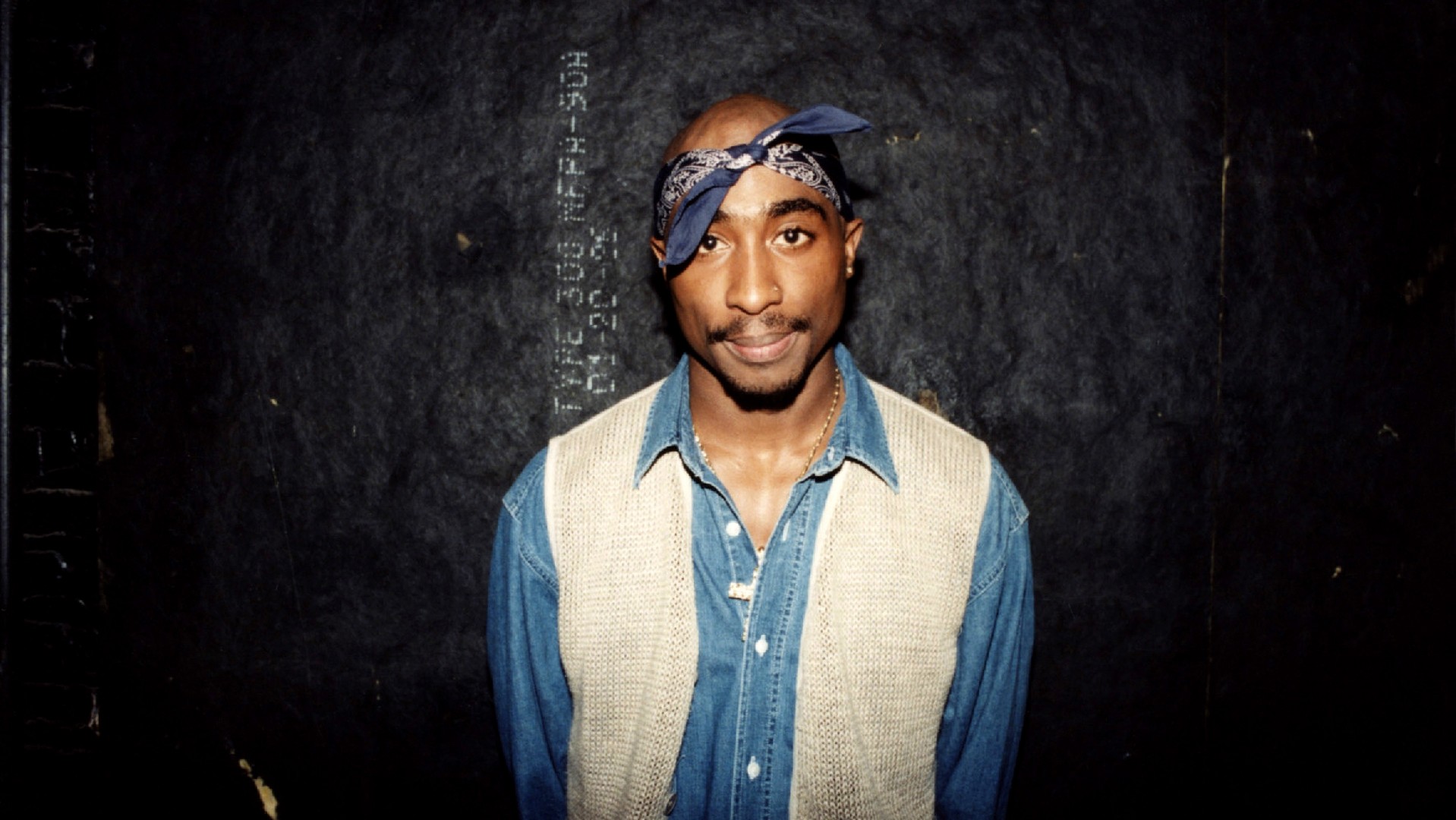 Why police have reopened the Tupac Shakur murder case
Why police have reopened the Tupac Shakur murder caseUnder the Radar House near Las Vegas is searched as police hunt killer of the famous rapper nearly 30 years on
-
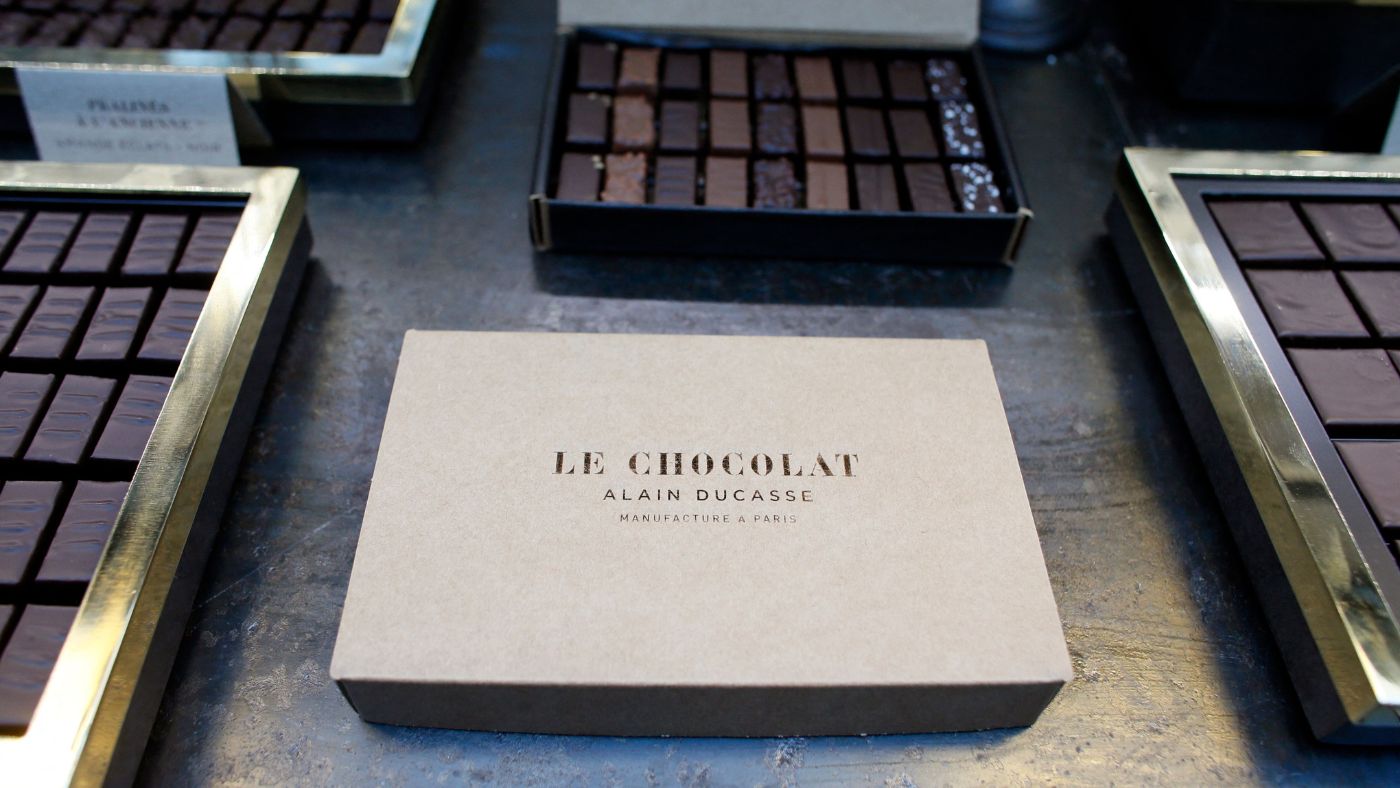 A tour of Alain Ducasse’s chocolate factory in Paris
A tour of Alain Ducasse’s chocolate factory in ParisUnder the Radar Star chef has spent a decade transforming chocolate – now it’s coffee, ice cream and biscuits